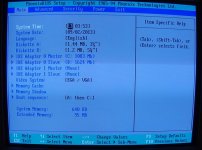mwin
Member
Hello,
I am working on a Gateway 2000 486DX2/50.
The Motherboard is a Micronics 09-00081 Baby Gemini.
It has a Phoenix 80486 BIOS PLUS Version 0.10 G21-2 RIDE.
I am trying to put a 1TB hard drive into this system.
From what I understand I need to update the BIOS to make this happen.
Does anyone have a BIOS update for this board?
I believe the last version that came out was Part no. M4GS20 Revision 4.03.6.10 that is according to this website :
http://www.rigacci.org/docs/biblio/online/firmware/mfibios.htm
Please let me know if you can help. Thanks.
I am working on a Gateway 2000 486DX2/50.
The Motherboard is a Micronics 09-00081 Baby Gemini.
It has a Phoenix 80486 BIOS PLUS Version 0.10 G21-2 RIDE.
I am trying to put a 1TB hard drive into this system.
From what I understand I need to update the BIOS to make this happen.
Does anyone have a BIOS update for this board?
I believe the last version that came out was Part no. M4GS20 Revision 4.03.6.10 that is according to this website :
http://www.rigacci.org/docs/biblio/online/firmware/mfibios.htm
Please let me know if you can help. Thanks.

